| -------- Llama and Alpaca Health Page -------- |
ANTIBIOTICS - See Drugs and doses
BREEDING
• Pregnancy & Testing
• Retained Corpus Luteum
• The Alpaca Estrus Cycle Chart
• Breeding Record & Birth Calendar
DEWORMING
• Fecal Testing
• Meningeal Worm
• Deworming
• Panacur & Panacur Liquid
• Strongid
• Dectomax (doramectin)
• Diatomaceous Earth (DE)
• Ivermectin (for Camelids)
NEONATES
• Weaning
• Navel Treatment
• Rickets - Vitamin D (Supplement)
NUTRITION
• Minerals
• Grass Hay
• Hay Testing
• Grain Ration
• Calf Manna
• Equine Senior
• Bentonite, use of in feed
|
SKIN DISORDERS
• Mange & Munge
PARASITES
• Lice, Flies and Ticks
POISONOUS PLANTS
• Death Camas
• Poison Ivy, Oak & Sumac
• Links
VIRUS
• Corona Virus and Camelids
• West Nile (WNV)
• Hantavirus (Pulmonary Syndrome) (HPS)
• Vesicular Stomatitis (VSV)
• Foot and Mouth (FMD)
• Bovine Viral Diarrhea (BVDV)
• Rabies
• Equine Herpesvirus (EHV-1)
• Bovine Coronavirus
• Herpesviruses (aka 'the snots')
• Adenovirus Virus
• Bluetongue virus (Google)
• Western Equine
Encephalitis (WEE)
• Cerebellar Abiotrophy
• Pigeon fever (aka, pigeon breast, breastbone fever, dryland, distemper, dryland strangles, false strangles, false distemper)
|
VACCINATIONS
• C D & T
MISCELLANEOUS
• Eye and steroids
• Eye Washing
• Diarrhea
• Choking
• Dehydration - checking for
• Apple Cider Vinegar
• Giving Shots
• Drugs/Vaccines to Avoid
• Polioencephalomalacia
• Alpacas with Other livestock
• Abscess
• Dehydration; checking for
HERBICIDES
• Use of 2,4-D on pastures and hay.
|
|
BREEDING |
|
First, for each potential breeding, clean under the females tail with Betadine® and warm water & dry the area with a clean rag. This helps to prevent the male from contaminating the female's internals.
:-O
Breeding Time and Orgling:
I have had males sit on a female for as short as 3 minutes and as long as 40 minutes with confirmed pregancy in both. You should notice the male orgling during the process. If the male doesn't orgle and you have difficulty in getting females pregnant with this male, the lack of orgling may be the problem. It's a well known fact that the female requires the male noise to ovulate. Males with an absence of orgling during mating should be either taken out of the breed pool or wait a period of time and see if his attitude/orgling changes because of age. This is a genetic defect that should not be propagated. |
Ultra Sound This is a much better choice in determining if a female is pregnant rather than testing blood. It's a well known fact that a CL (Corpus luteum) can be retained from a menstrual cycle. And although it is not the product of a fetus, it continues to produce progestrone as if she was pregnant. An experienced operator of a UltraSound Machine can see a retained CL. Generally you have to wait for nearly 30 days to discover a retained CL on ultrasound. |
Breeding:
Put a halter with lead on the male. Leave the lead rope looped over his back. Let the male breed the female. Wait 7 days and run her by the male again. Watch her attitude. If she spits at the male, pull the male off. If there is no spitting, let the male breed her again. If she runs around a bit but does not spit at the male the female may be on the edge of her ouvulation cycle. Your choice if you want the male to breed her or wait for 12-24 hours to breed her again.
Alpaca Follicle Cycle:
Click chart to increase image size. 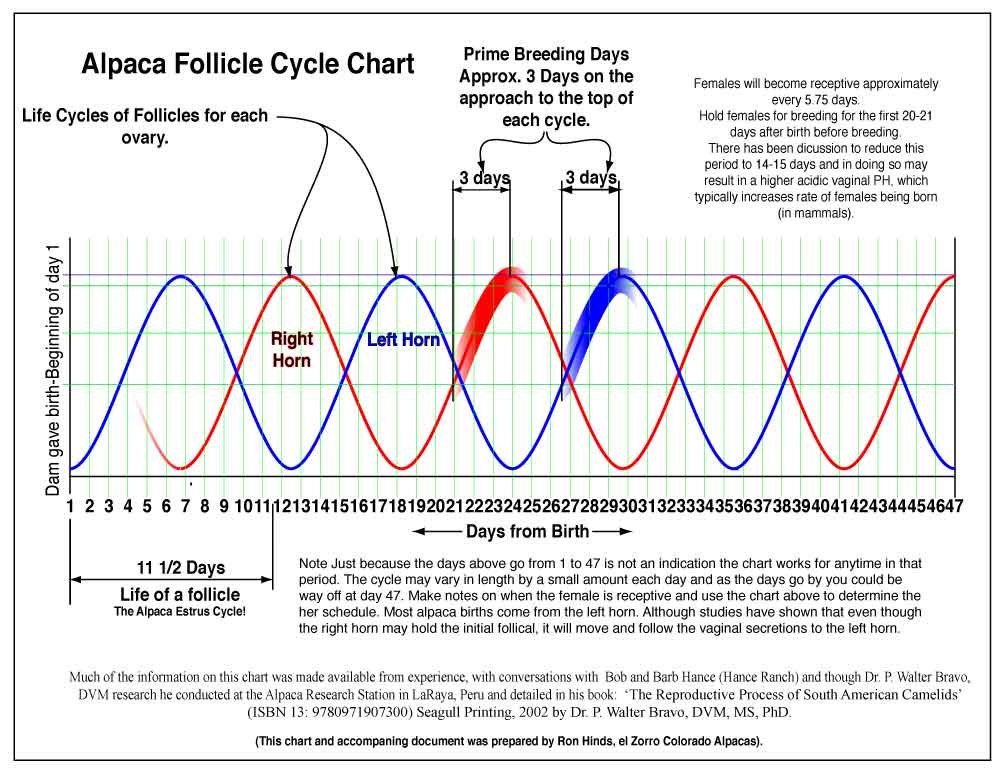 |
Breeding Record & Breeding to Birthing Calendar:
The link below is to a spreadsheet (.xls)
. The spreadsheet contains two pages:
Page 1) is a Birth/Due Date calendar. You must specify the year to correctly calculate dates during leap years. AND
Page 2) The days in utero (breeding to birthing). The default value is 335 days for alpacas, but you can change it to any value..
Actually the birthing charts may be used for about any mammal.
AlpacaBirthCalendars.xls
Format is .xls for compatibility of other (than Microsoft) spreadsheets.
|
DEWORMING
(For Colorado and the very dry high plains
)
References |
General:
There has been major developments in recent years on the dosage and rotating dewormers. Do Not rotate dewormers. Instead do fecal test and see what (if any) worms you have and treat them.
20% of the alpacas produce 80% of the parasite eggs. These are usually crias, <5 months old. And because of that, do not do herd wide deworming. It's a waste of dewormer, your time and it doesn't do (most of) the camelids any good either. Climate change has effected the process of a lot of things in nature and one of them (at least here in Colorado) is dry weather, i.e. no moisture. No moisture = less parasites. Local (eastern Colorado) Camelid Vet repeatably says:'skip the dewormers!'.
Dectomax (doramectin) 1cc/70-100lbs - SubQ This is only in a liquid form for now, you must inject it. Dr. Pugh, DVM (date: Summer '98 at AOBA Conf.) seminar talked about Dectomax and said it was better and safer and longer lasting than Ivomectin. Was tested on Dairy Cows. He says is real safe. I have noticed many camelid vets recommend this, now.
Strongid-C (Pyrantel) Granular, Paste and liquid is available. Very safe. Considering the additional 'bugs' that Pacacur treats it is best you just use Panacur/Safeguard instead of Strongid.
Panacur/Safeguard (Fenbendazole) Oral: Double/Triple dosage as stated on package. Treatment for: roundworms, hookworms, lungworm, whipworm, stomach worms and certain types of tapeworms
.
|
Panacur/Safeguard (Fenbendazole) Oral: Double/Triple dosage as stated on package. Treatment for: roundworms, hookworms, lungworm, whipworm, stomach worms and certain types of tapeworms
.
Fecal testing for worm (eggs in stool/pellets): Should do at least once per year, (can deliver pellets to local vet for processing) OR.... Dissolve Epson Salts in test tube. cut/crush up pellet(s) and put in a special solution. Spin down...or Shake... eggs will rise to top. Important to take samples from many places (many alpacas). Need a 40+ power microscope, recommend a dual lense to see eggs. (You might want to check out the digital microscopes instead of the traditional units. They are less expensive and much easier to use.) The parasites are little round clear, almost looks like bubbles on the plate. You can purchase a fecal kit from the Vet supply houses that will do 50 tests or so. If you would like to have parasite identification done, you can gather a fecal sample and take it to you local vet. Look for your DIY fecal testing supplies here.
Meningeal Worm or brainworm (Parelaphostrongylus tenuis) is a neurotropic nematode parasite common to white-tailed deer also known as Virginia deer Odocoileus virginianus, which causes damage to the central nervous system. The parasite can also infect Moose (Alces alces), elk (Cervus canadensis), caribou (Rangifer tarandus), mule deer (Odocoileus hemionus), and others are also susceptible to the parasite when there is an increase of white-tailed deer in close proximity.
Here in eastern Colorado the climate is typically very dry and meningeal worm is not a concern. Colorado has 'Mule Deer' (Odocoileus hemionus).
|
| NEONATES |
Navel Treatments Dipping:
Best is Novasan Teat Dip concentrate
(https://www.google.com/search?hl=en&as_q=Novasan+Teat+Dip+concentrate ) (IMPORTANT: Follow instructions to dilute). Can give 1cc penicillin shot (SubQ) instead of navel dip. (Testing shows either is ok.) If navel drips, blood. Tie dental floss around navel with (a very small bow) knot. Remove the next day to drain out any infection material in navel. (Drain and repeat until it stops bleeding.)
IgG Testing
When to test: anytime 24 hours after birth. (Note: CD&T vaccinate moms 45-60 days before delivery. This causes high(er) IgG in moms milk.) Can have total Protein of blood tested before IgG is determined. If Total Protein less than 4.5, then transfuse cria. Acceptable range is 4.5 to 4.7 Do test 24 hours after birth. Can purchase total protein kits (can carry around in pocket.....yeah- that small) (I don't know where, if you do contact me.) If you have a vet that says he/she can test colostrum intake using cattle, equine, swine, etc. test kits.... They're nuts! Have your vet call Jorgensen and find out the CORRECT information! Generally you use Triple J's testing for IgG. Contact info is on on their website http://www.kentlabs.com/ When is a test required for IgG: Well this is a big question. Test if you: 1) If you have a female that has produced cria(s) that have a problem making or having the colostrum for the crias vin the past, have the crias tested until you have determined the female no longer has the problem* 2) If they don't get milk within the 6-10 hour period after birth 3) If you feed anything other than moms milk within 6 hours after birth. • Do Not breed a female with a well known problem making milk. Take them out of the breeding pool. You do not propagate the species with these genetic problems. http://www.kentlabs.com/ When is a test required for IgG: Well this is a big question. Test if you: 1) If you have a female that has produced cria(s) that have a problem making or having the colostrum for the crias vin the past, have the crias tested until you have determined the female no longer has the problem* 2) If they don't get milk within the 6-10 hour period after birth 3) If you feed anything other than moms milk within 6 hours after birth. • Do Not breed a female with a well known problem making milk. Take them out of the breeding pool. You do not propagate the species with these genetic problems.
|
Weaning:
Wean cold turkey. White blood cells come to bottom of utter when not nursing. When nursing continues neonate sucks out all white blood cells.... Causes inflammation of uterus and possible mastitis. (This is officially called the 'Utter' (other) Method... from Jerry Dunn. She is a well known and well respected llama owner and trainer in Golden, CO.)
|
Rickets & Vitamin D
First rule is to watch your alpacas. Know their personalities, quirks, how they walk. Let them out in the in the pasture, do they run, jump, play.. Or does the crias just start grazing? Those little changes can revel problems in an animal. Those crias that are 4-7 months old are most susceptive to Rickets. Especially in the winter, late winter. The sunshine is limited due to the position of the sun, cloudy days and . Even a sunny day may be cold which will keep the crias in the barn. And most important full fleeces... all limit the sunshine and thus limit Vitamin D.... which cause Rickets. Watch those crias. Are they walking kinda odd, not running with the other playmates? Not jumping on the back of others in play? You may have a rickets. Have a blood test done quickly. I've used A, D and E paste. it works fine for animals that are not recumbent. Vit. D shots and radiographs (X-Ray) may be needed for more serious situations. You'll need your vet. Start them on the medication even before you get the Vit. D results. Watch your crias walk around early on. If you start to see changes… do something! IgG
|
NUTRITION |
Minerals:
Alpacas need minerals, free choice and granular in form. On the web at: Stillwater Minerals at: http://www.stillwaterminerals.com/ There are supplements that can be purchased and fed daily that contain the minerals needed.
Grass hay is best. Orchard and Brome
Fresh grass pasture preferred for lactating females. Older lactazting females or those showing weight loss, put them on some grain (COB), pelleted llama/alpaca feed and alfalfa pellets (or real alfalfa hay).
Feeding pellets? Pellets when eaten are moisten with mouth juices and this make the pellets swell up. Getting a lot of theses pellets in one gulp will cause a blockage in the esophagus and start choking on them. Mix well with other types of food like C(orn)O(ats)B(arley). May have to put large river run (large smooth rocks, big enough they can't get them in their mouth) rocks to 'slow' down the consumption (smaller gulps).
Alpacas and llamas eat about 2% of their body weight in hay per day. A 400 pound llama will eat about 8 pounds of hay per day. That equates to about 10-15% of a bale of hay weighing about 65 pounds. Hay for an 150 pound Alpaca would be about 3 pounds of hay or about half that of a llama. Hay can be fed free choice, as these critters know when to stop eating. Pile it up a week's hay ahead of time, it's ok. They may waste a lot of it walking on it to get to the newer parts of the bales (Try that with other hay consuming animals and you'll have dead animals all over the pasture!) Alfalfa is not recommended as a regular feed, it contains too much protein. It can be fed to them occasionally as a treat or to increase conditioning. There has been thoughts that too much alfalfa can cause kidney stones and calcium stones in the uninary tract. In humans you go in for surgery and your ok tomorrow, for camelids... it's life threatening.
|
Hay testing: For pricing, tests done, location, etc. go to: SDK Laboratories www.sdklabs.com Or call 1-877-464-0623 They are located in Hutchinson, KS Be sure to use a hay probe for true forage quality testing. You can borrow one at your local County Extension Agent.
Resources:

https://extension.psu.edu/animals-and-livestock/llamas-and-alpacas
|
SKIN DISORDERS |
| Mange and Munge |
Munge or Mange Lesions - Idiopathic Nasailperioral Hyperkeratotic Dermatosis. Munge or Mange Lesions consist of variable degrees of heavy, adherent crusts affecting the nose area, including at times, the bridge of the nose.
In extreme conditions it also occurs between the rear legs, the legs and ears. It can be extremly painful wilth bleeding 'fissures' in the skin. The nasal location may be severe enough to cause obstruction. Initial treatment for mild conditions one should attempt to treat area daily with (100/0) povidone iodine scrubs and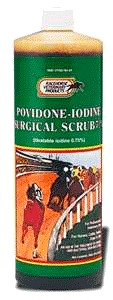 the application of 7% Povidone Iodine Surgical Scrubetincture of iodine. This may be combined with an antibiotic (e.g., penicillin, 40,000 U/kg subcutaneously, every 24 hours for 7-10 days; trimethoprim-sulfadiazine, 10 mg/kg diluted to 120/0 every 12 hours subcutaneously; ceftiofur, 1 mg/kg every 12 hours subcutaneously; or long-acting oxytetracycline, 18 mg/kg every 3 days for 15 days). The above treatment, with iodine and penicillin, is best for pregnant females. Lesions that fail to respond to antibiotic therapy(and are not pregnant) can be treated with topical glucocorticoids such as the application of 7% Povidone Iodine Surgical Scrubetincture of iodine. This may be combined with an antibiotic (e.g., penicillin, 40,000 U/kg subcutaneously, every 24 hours for 7-10 days; trimethoprim-sulfadiazine, 10 mg/kg diluted to 120/0 every 12 hours subcutaneously; ceftiofur, 1 mg/kg every 12 hours subcutaneously; or long-acting oxytetracycline, 18 mg/kg every 3 days for 15 days). The above treatment, with iodine and penicillin, is best for pregnant females. Lesions that fail to respond to antibiotic therapy(and are not pregnant) can be treated with topical glucocorticoids such as  triamcinolone acetonide (Panalog, Solvay, Mendota Heights, MN), dexamethasone (Tresaderm, MSD-AGVET, Rahway, NJ), or fluocinolone (Synotic, Syntex Laboratories, Palo Alto, CA) or a more potent (and costly) preparation marketed for humans, such as clobetasol (Temovate, Glaxo, Research Triangle Park, NC). (NOTE: triamcinolone acetonide is the main ingredient in Nasacort, an OTC nasal spray. It is also sold in generic form from Walmart. No prescription required.) triamcinolone acetonide (Panalog, Solvay, Mendota Heights, MN), dexamethasone (Tresaderm, MSD-AGVET, Rahway, NJ), or fluocinolone (Synotic, Syntex Laboratories, Palo Alto, CA) or a more potent (and costly) preparation marketed for humans, such as clobetasol (Temovate, Glaxo, Research Triangle Park, NC). (NOTE: triamcinolone acetonide is the main ingredient in Nasacort, an OTC nasal spray. It is also sold in generic form from Walmart. No prescription required.)
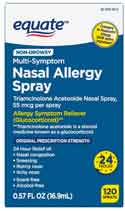 The treatment of Panalog or triamcinolone acetonide typically has almost miracle results. You will see lesions magically disappear in 1-2 days. NOTE: Many of these treatments The treatment of Panalog or triamcinolone acetonide typically has almost miracle results. You will see lesions magically disappear in 1-2 days. NOTE: Many of these treatments 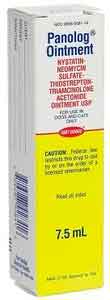 contain a steroid such as triamcinolone acetonide and (in very small doses) will cause pregnant females to abort crias. contain a steroid such as triamcinolone acetonide and (in very small doses) will cause pregnant females to abort crias.
DO NOT USE ANY TREATMENT THAT CONTAINS STEROIDS ON PREGNANT FEMALES, EVEN IN THE VERY SMALL DOSES IT WILL CAUSE AN ABORT. USE THE IODINE AND ANTI-BACTERIAL TREATMENT PREGNANT FEMALES. (YOU WON'T FIND THIS INFORMATION IN THE BOOK).
In severe cases the base of lesions may also be injected with triamcinolone acetonide 2 mg/mL, repeated as necessary. This also has a very dramatic effect. Alternatively, oral prednisone beginning at 1 to 2 mg/kg/day can be used for 1 to 2 weeks; the dose is then halved for 1 to 2 weeks, then used every other day for 2 weeks. The glucocorticoid then is gradually tapered and discontinued. An oral zinc supplementation (Zinpro100 or Zinpro40) mixed with the minerals) is also a benefit, but it does take relatively high dosages to produce a response (e.g., 2 g zinc sulfate/day or 4 g zinc methionine (Zinpro)/day.) Treatment may be continued until remission and a couple of months beyond. (This works, I have tried it many times.) Maintenance is attempted with the previously described zinc/mineral mix. This information was provided by: The Veterinary Clinics of North America Food Alpaca Practice Update On Llama Medicine Volume 10 Number 2 July 1994 Pages 234-5 ISSN: 0749-0720(print), 1558-4240 (Electronic) Published by W.B. Saunders Company This Publication is back in print as of January 2001 and available through 'normal' sources. A PDF is also on sale at www.sciencedirect.com.
An additional (non-steroid) solution can be found by a mixture originally advertised by Mike Safley (Northwest Alpacas), called: 'Witch's Brew'. 'Witch's Brew'.
|
| PARASITES |
Lice, Flies and Ticks

|
POISONOUS PLANTS
|
 a.k.a. Black Snakeroot, Poison Onion, White Camas, Alkali grass, meadow deathcamas, Poison sego, Crow Poison, Sandcorn Zigadenus (or Zygadenus) venenosus. a.k.a. Black Snakeroot, Poison Onion, White Camas, Alkali grass, meadow deathcamas, Poison sego, Crow Poison, Sandcorn Zigadenus (or Zygadenus) venenosus.
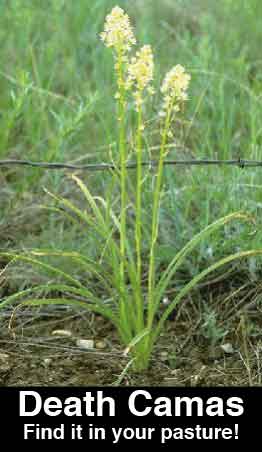 General: A perennial lily with a single bulb, with 5-6 basal, thickened, V-creased leaves, and snowy cream-colored flowers in a dense, terminal cluster. The underground bulbs are scaly. The plant emerges in very early spring. Usually 30-60 cm (1-2 ft) high at full growth, (growing from a bulb which resembles a small onion, but lacks any onion odor. General: A perennial lily with a single bulb, with 5-6 basal, thickened, V-creased leaves, and snowy cream-colored flowers in a dense, terminal cluster. The underground bulbs are scaly. The plant emerges in very early spring. Usually 30-60 cm (1-2 ft) high at full growth, (growing from a bulb which resembles a small onion, but lacks any onion odor.
Entire plant, especially the onion-like bulbs, are highly toxic and is quite fatal to humans who mistake it for wild onions or Blue Camas. Entire plant is extremely toxic to grazing livestock. Respiratory problems occur after eating a very small amount (crias) to 2 pounds (equine) of the plant or 0.6 to 6.0% of body weight. The plant is toxic at all stages of growth. The flower cluster does not have to appear for the plant to be toxic.
Symptoms: Human and animal symptoms of Death Camas may appear from 1-8 hours after 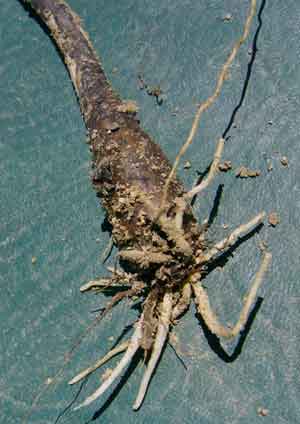 eating the plant. If recovery does occur it will be within within 24 hours. Symptoms include: excessive watering (foaming) of the mouth, burning following by numbness of the lips and mouth, thirst, headache, dizziness, nausea, stomach pain, persistent vomiting, diarrhea, muscular weakness, confusion, slow and irregular heartbeat, low blood pressure, subnormal body temperature. In extreme cases will result in difficulty in breathing, convulsions and coma followed by death. eating the plant. If recovery does occur it will be within within 24 hours. Symptoms include: excessive watering (foaming) of the mouth, burning following by numbness of the lips and mouth, thirst, headache, dizziness, nausea, stomach pain, persistent vomiting, diarrhea, muscular weakness, confusion, slow and irregular heartbeat, low blood pressure, subnormal body temperature. In extreme cases will result in difficulty in breathing, convulsions and coma followed by death.
This might put a human in the hospital for a few days, but an Alpaca, especially a cria.. it's life threatning.
Treatment: No know antidote, treat symptomatically. Induce vomiting, or perform gastric lavage; follow with activated charcoal and saline cathertic; general supportive treatment for symptoms; maintain fluid and electrolyte balance; monitor breathing and heart rate, blood pressure; subcutaneous application of atropine, repeated as needed, will alleviate slow heart rate; for persistent low blood pressure, ephedrine or dopamine may be given; control convulsions with i.v. diazepam.
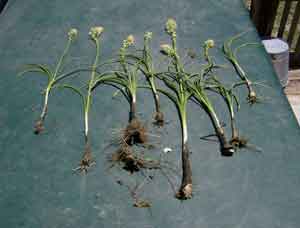 Control: Dispose of the entire plant including the entire bulb. Take care you do not disturb the flower cluster, as it will distribute the seeds for next year's growth. Spraying in early spring is also a suggested in controlling the plant. Control: Dispose of the entire plant including the entire bulb. Take care you do not disturb the flower cluster, as it will distribute the seeds for next year's growth. Spraying in early spring is also a suggested in controlling the plant.
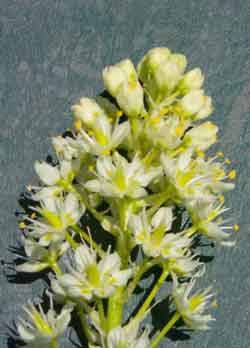 Best Solution: DIG IT UP, BULB AND ALL and PUT IT IN THE TRASH ! Best Solution: DIG IT UP, BULB AND ALL and PUT IT IN THE TRASH !
Sources:
• Field Guide to Plants Poisonous to Livestock—Western U.S.; Shirley A. Weathers; ISBN: 0-9660397-3-4, Rosebud Press;
• 1998 Common Posionous Plants and Mushrooms of North America; Nancy J. Turner, Ph.D. and Adam F. Szczawinski, Ph.D.; ISBN: 0-88192-312-5; Timber Press, Inc.;
• 1991 Weeds of Colorado; Robert L. Zimdahl, Cooperative Extension— Colorado State University—Fort Collins, CO 80523 Bulletin 521A;
• 1990 Weeds of the West; The Western Society of Weed Science / University of Wyoming ; Printer:Pioneer of Jackson Hole ISBN: 0-941570-13-4; 1992 (revised)
|
Poison Ivy, Oak & Sumac
Ok, so you need to get rid of it! Burn it? NO! BEWARE: The smoke from fires, especially those that are smoldering has all the volatile oils from the Poison Ivy plants. DO NOT BREATH THE SMOKE OR FUMES FROM SUCH A FIRE - PEOPLE DIE OFTEN DUE TO THIS. Best way is to dig it up from the roots and put it in a plastic bags seal the bag then put it in the trash. You can mow it (or cut it down) often and it will eventually die as well. Avoid letting it grow until the berries appear... these are the seeds! Then you have a bigger problem!  : Go here to see all the links. : Go here to see all the links. |
LINKS-LINKS-LINKS-LINKS-LINKS-LINKS
IMPORTANT:
Just because something is on the poisonous plants list doesn't mean it can't be a good food or feed, and just because it is absent from the list doesn't mean it is safe!
COLORADO STATE UNIVERSITY - Veterinary Teaching Hospital - Ft. Collins
USDA - Poisonous Plant by Toxic Syndrome
Cornell University - Plants Poisonous to Livestock
Canada resource
Purdue University - A complete search list... tyou pick! |
| MISCELLANEOUS |
Washing the eyes:
Look, at the eye lid(s) and look for a hair or something under the eye lid. Get some saline solution (same stuff folks use to clean contact lenses) at the local store. Just Saline... nothing else in the bottle.
Squirt some into the eye and wash it out.
Occasionally the lower eye lid turns into the eye (on neonates). Put some eye ointment under the eye lid to make it flip back out. The sooner you do this the better the results. |
Diarrhea
From a well respected Local camelid vet. -->> Cure for the GWAS poopies.
Kaopectate 20-30 ML four times a day
Put it in the back of the mouth so they don't taste it!
'cause if they do taste it it may come back out... then YOU will taste it!
Electrolyte water or drench
Probiotics
Should get firmer in about 48 hours
If they stop eating and/or have a temp of over 103 she's treating with Banomine and antibiotics. |
Apple Cider Vinegar
Owners use Apple Cider Vinegar for quite a few reasons:
1) It (reportedly) reduces Calcium stones in the urinary tract and kidneys.
2) It does keeps algae out of the water pale.
3) It (reportedly) promotes female crias. It is well known that females are created when the mother's body chemistry is more acid. It doesn't always work, of course, but many owners use it.
(Of course, if this sounds to good to be true, that's because it is. Some friends used it and got 13 female crias in one year. They were very excited... The next year another tried it and got 13 male crias in a row!)
Make sure you get REAL Apple Cider Vinegar and use one cap full in the water pale or tub each day or when it is refilled. |
Dehydration, Checking for
Dehydration, Checking in alpacas
By Stephen Hull, Ph.D. (off Alpaca chat list 12/12/2000)
"Dehydration is easy to assess in alpacas with loose skin and harder in those with "tighter" more adhered skin. Dogs and cats are a snap - camelids a bit harder, pigs are almost impossible.
Pull up a ~ 1/2 inch (~1 cm) fold of skin on the back of your hand. Let go and see that it immediately "flops" back. In dehydration the subcutaneous tissues are stiffer and less compliant. The skin, when pinched up, will stay up when released and resemble a "tent". This this is often called the "tenting response". Skin turgor is the proper name.
I assess skin along the spine at about the same spot I check for condition. Crias are easier to check than adults.
Get used to what "normal" is on your herd (and yourself). This technique is a very precise measure of body hydration."
|
Giving Shots
You should find many articles on the subject in various Camelid magazines and newsletters. One is in Summer 2000 issue of Alpacas® Magazine on Page 49. It has pictures as well. (Use Google to find more.)
Vaccinations and other shots should be given in the appropriate areas: (SubQ) Subcutaneous indicates betwen the skin and muscle. (IM) Intermuscular indicates in the muscle. Some vets and owners use alcohol to disinfect the area before giving the shots. It is my understanding that any liquid that is not wiped clean can be used to contamanate the area where you're giving the shot. Considering how difficult it would be to wipe the alcohol from such a fiber alpaca. I took allergy shots for a few years and the nurse always cleans my arms with a small alcohol wipe, but then allows for it to dry or wipes away the excess from the area where the shot is being given. The best time to give shots are right after they are sheared (real easy to find skin) and are still incapacitated on the shearing table. I believe in this case of the Alpacas (and other furry creatures) it is best if you just find some skin and quickly poke them without using alcohol. Every vet I have used has done this. It is possible to shave these critters and then use alcohol to clean the area, since you don't have the fiber to contend with. One should aspirate the syring, i.e. pull back on the plunger in the case of IM injections to see if you have contacted a blood vessel. If so pull out the needle and repeat in a different location. Doing this prevents the drug from entering the blood stream directly and causing problems. |
| Choking alpacas or llamas: Rub the front-left side of the neck with fist. This tends to release the blockage in neck (esophagus). alpaca will give impression that he/she is having difficulty breathing. Either breathing in or exhaling. If you have/had asthma, you know exactly what I mean! |
Polioencephalomalacia
Polioencephalomalacia (aka Polioencephalo-malacia) is a thiamine-responsive neurologic disease of ruminants.
Clinical signs of polioencephalo-malacia range from dullness, head pressing and blindness to opisthotonus, muscle tremors, twitching, hypersalivation, coma and death. |
Drugs/Vaccines to Avoid
Don't use any oil based (injectable) vaccines on camelids. You can use mineral oil to help in constipation, dehydration, etc., but do not inject it.
Valbazen (can cause deformities in pregnant females)
Ivermectin aka ivomectin (avoid unless you ABSOLUTELY HAVE to use it!)
Ivomectin (pour-on) --- this does not provide adequate protection for camelids.
Ivomectin shot - may be given when necessary for shows and interstate travel requirements at the rate of 1cc /110 lbs. Ivomectin will not kill tape worms, use Strongid or Panacur as stated above. |
| |
|
|
| |
|
|



 the application of 7% Povidone Iodine Surgical Scrubetincture of iodine. This may be combined with an antibiotic (e.g., penicillin, 40,000 U/kg subcutaneously, every 24 hours for 7-10 days; trimethoprim-sulfadiazine, 10 mg/kg diluted to 120/0 every 12 hours subcutaneously; ceftiofur, 1 mg/kg every 12 hours subcutaneously; or long-acting oxytetracycline, 18 mg/kg every 3 days for 15 days). The above treatment, with iodine and penicillin, is best for pregnant females. Lesions that fail to respond to antibiotic therapy(and are not pregnant) can be treated with topical glucocorticoids such as
the application of 7% Povidone Iodine Surgical Scrubetincture of iodine. This may be combined with an antibiotic (e.g., penicillin, 40,000 U/kg subcutaneously, every 24 hours for 7-10 days; trimethoprim-sulfadiazine, 10 mg/kg diluted to 120/0 every 12 hours subcutaneously; ceftiofur, 1 mg/kg every 12 hours subcutaneously; or long-acting oxytetracycline, 18 mg/kg every 3 days for 15 days). The above treatment, with iodine and penicillin, is best for pregnant females. Lesions that fail to respond to antibiotic therapy(and are not pregnant) can be treated with topical glucocorticoids such as  triamcinolone acetonide (Panalog, Solvay, Mendota Heights, MN), dexamethasone (Tresaderm, MSD-AGVET, Rahway, NJ), or fluocinolone (Synotic, Syntex Laboratories, Palo Alto, CA) or a more potent (and costly) preparation marketed for humans, such as clobetasol (Temovate, Glaxo, Research Triangle Park, NC). (NOTE: triamcinolone acetonide is the main ingredient in Nasacort, an OTC nasal spray. It is also sold in generic form from Walmart. No prescription required.)
triamcinolone acetonide (Panalog, Solvay, Mendota Heights, MN), dexamethasone (Tresaderm, MSD-AGVET, Rahway, NJ), or fluocinolone (Synotic, Syntex Laboratories, Palo Alto, CA) or a more potent (and costly) preparation marketed for humans, such as clobetasol (Temovate, Glaxo, Research Triangle Park, NC). (NOTE: triamcinolone acetonide is the main ingredient in Nasacort, an OTC nasal spray. It is also sold in generic form from Walmart. No prescription required.)  The treatment of Panalog or triamcinolone acetonide typically has almost miracle results. You will see lesions magically disappear in 1-2 days. NOTE: Many of these treatments
The treatment of Panalog or triamcinolone acetonide typically has almost miracle results. You will see lesions magically disappear in 1-2 days. NOTE: Many of these treatments  contain a steroid such as triamcinolone acetonide and (in very small doses) will cause pregnant females to abort crias.
contain a steroid such as triamcinolone acetonide and (in very small doses) will cause pregnant females to abort crias.
 General: A perennial lily with a single bulb, with 5-6 basal, thickened, V-creased leaves, and snowy cream-colored flowers in a dense, terminal cluster. The underground bulbs are scaly. The plant emerges in very early spring. Usually 30-60 cm (1-2 ft) high at full growth, (growing from a bulb which resembles a small onion, but lacks any onion odor.
General: A perennial lily with a single bulb, with 5-6 basal, thickened, V-creased leaves, and snowy cream-colored flowers in a dense, terminal cluster. The underground bulbs are scaly. The plant emerges in very early spring. Usually 30-60 cm (1-2 ft) high at full growth, (growing from a bulb which resembles a small onion, but lacks any onion odor. eating the plant. If recovery does occur it will be within within 24 hours. Symptoms include: excessive watering (foaming) of the mouth, burning following by numbness of the lips and mouth, thirst, headache, dizziness, nausea, stomach pain, persistent vomiting, diarrhea, muscular weakness, confusion, slow and irregular heartbeat, low blood pressure, subnormal body temperature. In extreme cases will result in difficulty in breathing, convulsions and coma followed by death.
eating the plant. If recovery does occur it will be within within 24 hours. Symptoms include: excessive watering (foaming) of the mouth, burning following by numbness of the lips and mouth, thirst, headache, dizziness, nausea, stomach pain, persistent vomiting, diarrhea, muscular weakness, confusion, slow and irregular heartbeat, low blood pressure, subnormal body temperature. In extreme cases will result in difficulty in breathing, convulsions and coma followed by death. Control: Dispose of the entire plant including the entire bulb. Take care you do not disturb the flower cluster, as it will distribute the seeds for next year's growth. Spraying in early spring is also a suggested in controlling the plant.
Control: Dispose of the entire plant including the entire bulb. Take care you do not disturb the flower cluster, as it will distribute the seeds for next year's growth. Spraying in early spring is also a suggested in controlling the plant. Best Solution: DIG IT UP, BULB AND ALL and PUT IT IN THE TRASH !
Best Solution: DIG IT UP, BULB AND ALL and PUT IT IN THE TRASH !